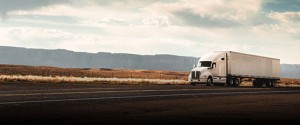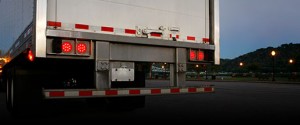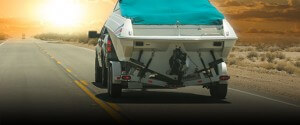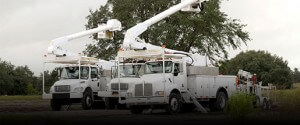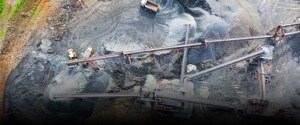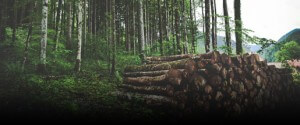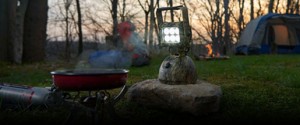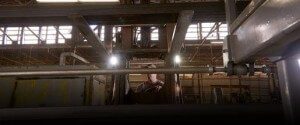Electrical Connections
- Trailer Connectors keyboard_arrow_right
- Air Products keyboard_arrow_right
- Terminals & Connectors keyboard_arrow_right
- Wire & Cable keyboard_arrow_right
- Support & Protective keyboard_arrow_right
- Switches & Electrical Assemblies keyboard_arrow_right
- Battery Connectors & Cables keyboard_arrow_right
- Kits & Tools keyboard_arrow_right
Company
- Company Profile keyboard_arrow_right
- Careers keyboard_arrow_right
- Case Studies keyboard_arrow_right
- Contact Us keyboard_arrow_right
- Media Center keyboard_arrow_right
- Grote News keyboard_arrow_right
- Trade Shows & Events keyboard_arrow_right
- Quality keyboard_arrow_right
- Star Safety Technologies by Grote keyboard_arrow_right
Tech Support & Information
Customer Information
Major Causes Of Lighting Failure
1. Corrosion in the wiring
The highway environment is one of the most toxic environments encountered by vehicular and specialized equipment. Water is bad, but salt water and ice buildup is worse. The basic problem is that salt water corrodes wiring at a more rapid rate than plain water and also wicks farther along wiring than rain water. Here’s what to do before the ice and salt brine season starts.
The trick is to completely seal off all wiring from the elements. Here’s how:
- Check all your connections. Loose connections are prime water entry points. Make sure all exterior sections of connection surfaces are liberally coated with anti-corrosion grease and check that the connection closes correctly and forms a tight closure.
- If wiring goes through a hole in a trailer wall or partition, make sure the hole edges are covered by a grommet or similar material. If not, the wire will fray and short out. Frayed wiring is a perfect entry point for salt water. It will enter any opening in the insulation and wick salt water through the harness, so inspect all wiring and make sure all frayed wiring is spliced out and properly sealed. There should be no taped splices in your wiring. All splices should be heat sealed with shrink splices. This is always true, but winter grime build up often hides splices that need attention.
- Any wires that hang down from their correct runs on the exterior of trailers are prime candidates for ice buildup. As ice accumulates, the increased weight pulls on the wiring, causing more fraying, loose, or severed connections, lamp dislocations, and stress on splices. If a wire or cable pulls out completely, you can lose your lighting. Once again the remedy is obvious. Wiring needs to be tucked and tied up using plastic tie wraps into its run so that ice can’t dislodge it. If a wire has to be exposed, a tie wrap can often prevent failure due to ice buildup. Check to see that drip loops are not in a place where unseen ice builds up. In winter, drip loops no longer always deflect water as they do when the temperature is above freezing.
- Wires that are incorrectly spliced and/or are beginning to corrode are not good conductors of electricity. As a result, lamps, especially ABS indicator lamps or stop/tail/lamps, will flicker or stop working altogether, creating a dangerous and often illegal situation.
- Battery and nose box connections need to be checked to make sure the required current is present. Terminals should be cleaned, tightened, and greased to protect the battery and the overall electrical service.
- Choosing a harness design that uses male pin lamp terminations is always a safer and better idea in all seasons, but especially so in winter. If ice does succeed in pulling wiring free of a lamp, the free wire will not short out its circuit by contacting metal surfaces on the trailer.
2. Sealing Out Corrosion
Dielectric grease has been around a long time. It works great when it is used correctly, but it’s trouble in a tube when misapplied.
Originally used on AC motors to protect them from shorts from exterior intrusion, dielectric grease’s ability to protect electrical connectivity over long periods of time soon found another role as a barrier to corrosion when used on electrical circuitry. Its protective properties allow trucks and trailers to operate over long periods of time in the face of ever more corrosive salt-based solutions used in larger amounts every year on Northern highways.
When grease was first used in harnesses, it wasn’t necessarily a marriage made in heaven. Some of the early compounds dried out prematurely. On top of that, many earlier rubber and synthetic rubber harnesses could not stand up to the chemical compounds in the grease, which would leach into the rubber compounds of the harness, debilitating its resistance to salt water corrosion though subsidence or cracking. Our industry-leading Grote UBS™ Ultra Blue Seal harness system solves all those problems.
Grote UBS™ harnesses use a soft, low durometer PVC that provides the best results when it comes to harness resistance to the effects of dielectric grease. UBS harnesses are resistant to chemical and UV attack, stay flexible, and won’t harden or crack. When used correctly with our dielectric grease, harness connections can remain free of corrosion over the lifetime of a trailer. The key word here is “correctly”.
3. Harness to Harness Connections
Whenever a harness connection is opened, either harness to harness or harness to lamp, a specific procedure should take place. Old grease should be cleaned out with a Q-Tip or similar tool, taking care not to gouge or scratch any part of the harness. Make sure the grease applied covers the pins themselves. New grease should be applied, not so much because the old stuff goes bad, but because adding new grease on top of old may be too much for the size of the connection. This creates a hydraulic effect, preventing the harness sections to close properly, preventing a complete seal.
Grote recommends that grease be put in both sides of the harness connection and recommends that for best performance, when available, a grease collar can be installed over the harness to harness connection as shown in the accompanying illustration. In this example, the collar contains the grease and helps prevent the connection from coming apart over the life of the trailer.
4. Harness to Lamp Connections
There are female lamp pin/male harness designs and male lamp pin/female harness designs. Both designs have their adherents. Grote provides both AMP and male lamp pin designs. The connector style we use is determined by our customers.
We prefer the male lamp pin design because after years of testing, we know that a greased male lamp pin design outperforms other designs. This style allows a super-tight harness within the lamp seal that does not relax with age, even in the presence of grease. Also, this design stands up better to ice loading on an exposed harness, the weight of which can pull the connection apart. And if the connection does let go due to damage from events such as a tire tread delamination, there is much less chance of a short circuit from a loose female harness connection connecting with an exposed metal part of the trailer. Regardless, of which connection style you choose, it is important not to use too much grease which can prevent a connection from closing correctly.
5. Which Harness to Spec – Custom or Modular?
The idea is to never compromise the harness by adding ways for salt intrusion to come in contact with its wiring. On the one hand, modular harness connections must be kept inviolate by using techniques described above. On the other, a modular harness gives you the ability to change or add to the harness without adding a splice which can add a salt gateway to the wiring if not done correctly. For example, if the harness is damaged, by going back to the last connection a new pigtail or harness section can be added without compromising the harness system.
A custom harness minimizes the need to splice a harness, but only when it is used as originally designed. Thus, when an improvement becomes available for the lighting of the trailer or the harness is damaged, splicing may be the only solution.
Grote provides both styles of UBS™ harnesses and can consult with you to find the best solutions for your particular needs.
